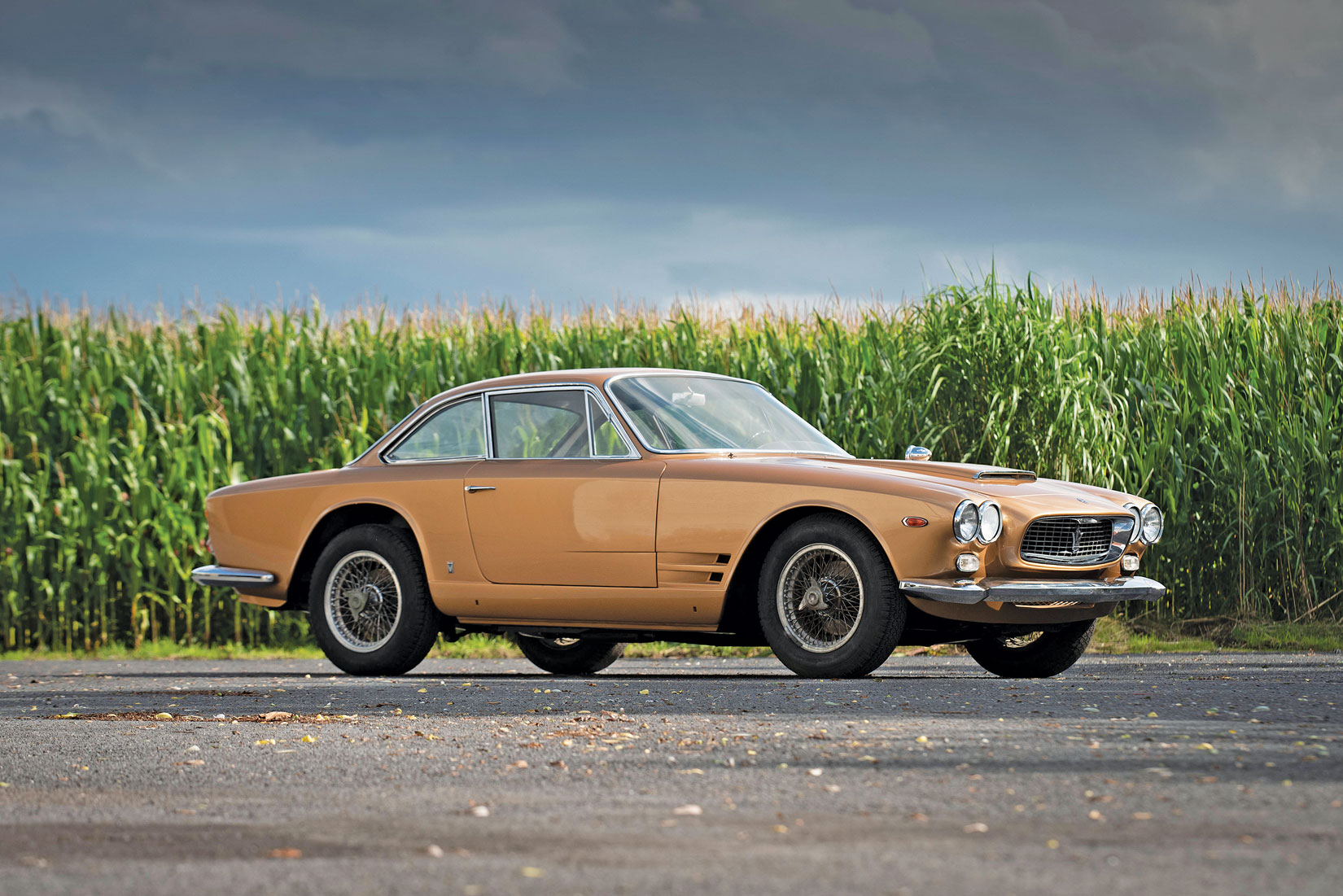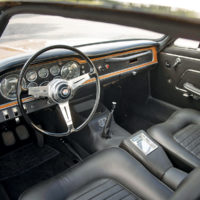SCM Analysis
Detailing
| Vehicle: | 1963 Maserati Sebring |
| Years Produced: | 1962–65 (Series I) |
| Number Produced: | 348 (Series I) |
| SCM Valuation: | $207,000 |
| Tune Up Cost: | $2,500 |
| Chassis Number Location: | Punched on front left suspension mounting |
| Engine Number Location: | Stamped on the rear of the engine, near the gearbox bellhousing |
| Club Info: | The Maserati Club (TMC) |
| Website: | http://www.themaseraticlub.com |
| Alternatives: | 1963–65 Aston Martin DB5, 1959–63 Ferrari 250 GT/E, 1963–70 Iso Rivolta |
| Investment Grade: | C |
This car, Lot 120, was sold for $140,428 (€126,500), including buyer’s premium, at Bonhams’ Spring Motoring online sale on March 31, 2022.
The Maserati Sebring, Tipo AM 101, is one of the most forgotten Maseratis in history. Conceived as a 2+2 coupe and aimed at the American market, it was styled by Giovanni Michelotti for Carrozzeria Vignale. Its linear and sharp style was quite advanced for the period. Nearly 600 Sebrings were manufactured across two series and three engines variants, which is only about a quarter of the total production of the more-successful 3500 GT.
The 6-cylinder Lucas fuel-injected engine was offered in three displacements. Production began with a 3.5-liter version, then increased to 3.7 liters, before ending with a 4.0-liter capacity. As is often the case, the earliest cars and the final cars command the most interest — the first cars for their purity and the last for their additional power and refinement.
A diamond in the rough?
This Series I Sebring, chassis number 10101823, was not an easy sell. By no fault of Bonhams, it was presented in the worst possible way. The auction team had to cope with the reality that the car, almost finished after a restoration, had no supplied history nor documentation. In today’s market, where “ready to drive” cars with a clear provenance get premium prices and lots of interest, this was a major handicap.
It was evident that the car was fresh from restoration when it was put into storage but with some missing details. It seems that the quality of the restoration work was quite good, with a beautiful paint job in the original Oro Longchamps. The same goes for the interior, which was extensively refurbished with black leather, per the original specification, although there’s an empty space in the dashboard for the missing radio. One thing is clear: The car’s storage space must have been clean, warm and dry, as the car isn’t showing major signs of deterioration even after being put away for so long.
More questions than answers
History is slim on our subject. We know it was delivered new to Belgium in July 1963, but then things get murky. The car seems to have been imported to the U.S. before returning to Europe and winding up in the Netherlands. As the car was offered without paperwork, we can only speculate how it ended up like this.
It’s possible there was litigation between the previous owner and the shop that restored the car. Or perhaps a deceased owner left the car behind, and it was designated by the court as a form of payment for its years of storage?
As for the engine, going by the stamped AM10110067 model number and Maserati production number 2119 above the water pump, this appears to be a non-original 4.0-liter unit. The upside is that it is the most powerful engine available in this model. Since the production number is available, a quick inquiry at Maserati Classiche may well be able to provide more information on its origin.
The bigger question is, would you buy a car like this? Why not? With a discounted price to allow necessary refurbishing, I don’t see much danger here. As for the missing history, that can be researched. Being that the car is not too old — we’re not talking about a pre-war antique — there’s a decent chance that more could come to light about the car’s elusive past.
Plenty of upside
This is, quite likely, the same train of thought used by the winning bidder. He snuck away with a car that could be worth $220k or more, for just over half that price.
Let’s do some math: Figure on spending $10k for some engine servicing and another $10k to replate the wire wheels, as these are worth an extra $15k on a Sebring. Then, another $25k (to be on the safe side) for paint correction, fresh tires and suspension, registration and so on. Finally, allocate $5k to research the history of the car. The new owner will still have, at current market value, a good margin of profit, around $30k. Assuming all goes well, this freshening will likely add even more value to the car. It’s hard to see how he can lose. At the amount paid, this Maserati could even be parted out for a financial gain.
On the less-materialistic side, if the new owner is simply looking for a good Sebring and not a quick flip, he has bought what seems to be a solid car for a competitive price. With Stellantis declaring it will invest further in the Maserati brand in the coming years, this could well be a good time to buy an underrated car from this historic Italian automaker. Consider this example quite well bought. ♦
(Introductory description courtesy of Bonhams.)




